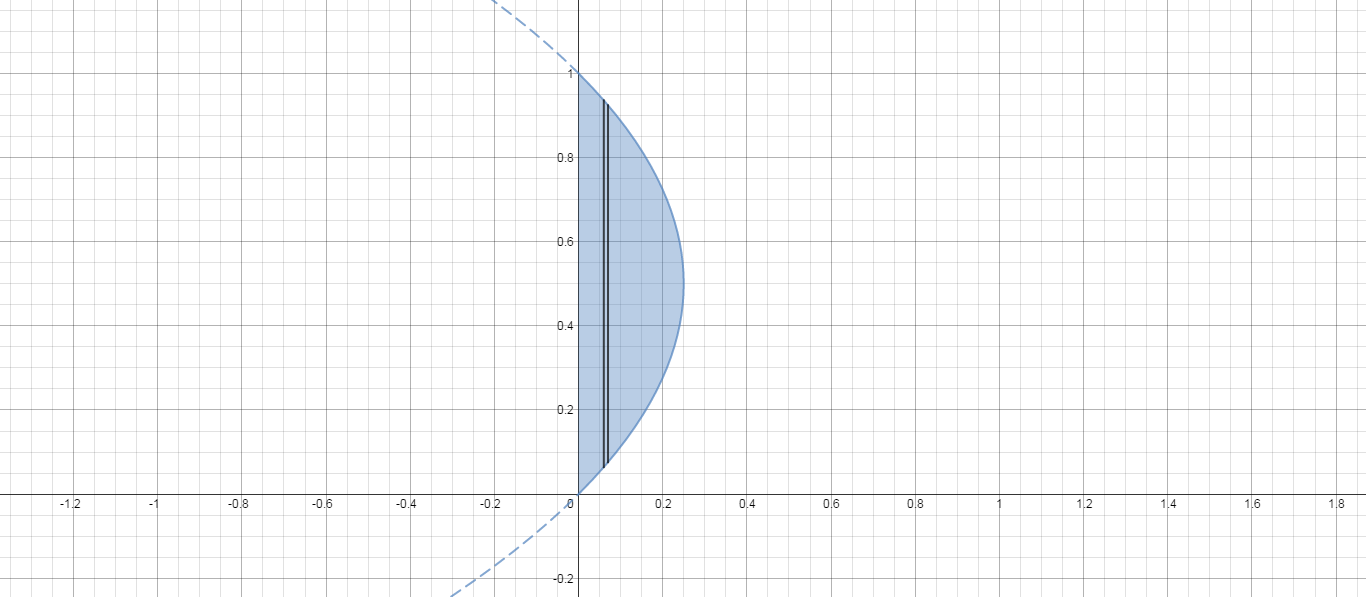How do you use the shell method to set up and evaluate the integral that gives the volume of the solid generated by revolving the plane region x=y−y2 and the y axis rotated about the y axis?
1 Answer
See the explanation section, below.
Explanation:
Here is a picture of the region. Because we have been asked to ue shells, a representative slice has been taken parallel to the axis of revolution. This make the thickness of our slice

The volume of the representative shell is:
2π×radius×height×thickness
As mentioned,
and we can see that
The
We need to solve
There are a couple of ways of doing this. (1) complete the square or (2) use the quadratic formula to solve
(There are other ways as well. For example, you can use the vertex formula to write the equation in standard form for a sideways opening parabola.)
I'll complete the square.
(Yes, this is the same as the answer you'll get by using the quadratic formula.)
The greater
and the lesser
So, finally, we can write the volume of the representative cylindrical shell:
Don't Panic. We can simplify this to get
We still haven't found the bounds on
In the region we have
The volume of the solid of interest is
Which can be evaluated by parts or by the substitution

